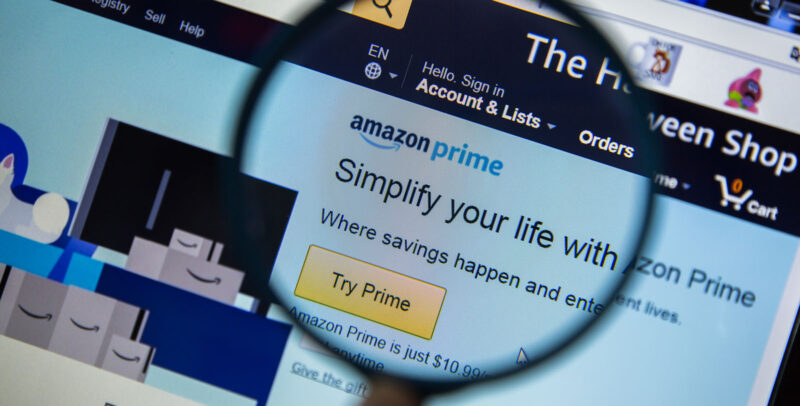Are you looking for a solution tailored to your business needs?
Parla con noiFocus on

How the subscription economy revolutionises the retail world in 2023
Companies need to plan to provide modular solutions to allow their customers to enjoy products and services based on their spending capacities and needs.
New consumer trends can be summarised in ease of access, convenience, customisation, time and money saving and flexibility.
Millions of people around the world pay a subscription to meet their needs. Just think of platforms such as Netflix, Apple TV, Amazon Prime, Spotify, Uber.
What is a subscription business model?
More and more companies are adopting the subscription model as a business model meaning a model based on the sale of subscriptions to receive recurring revenues.
This model focuses on customer loyalty with rather than customer acquisition.
But what do we really know about subscription services?
The basic premise is that customers are not seen as one-off consumers but as a long-term investment that kicks off the loyalty process for companies adopting subscription services.
Subscription services, based on the concept of recurring purchases, take into account the long-term economic benefit rather than individual transactions.
That’s why companies that offer subscription services need a clear view of business performance.
Data is important
The performance index is the Customer Lifetime Value, which is the index that helps companies measure the revenues generated in the “life cycle” of customers or the period in which they were active.
Today’s business organisations need to continually calibrate their actions on customers and are motivated to try to retain them for as long as possible.
The longer a customer subscribes, the higher the lifetime value becomes.
Increasingly more retailers are breaking the usual business patterns and are opening up to the world of subscription economy, having understood its potential and benefits for businesses and consumers.
How can the retail sector improve the customer experience and drive business growth?
First of all, promoting buying ease and the subscription economy model proves its worth in this scenario
Customers are keen to find a flexible and easily usable solution to purchase products at an affordable price.
The days of being stuck in an endless service seem to be over: subscription models must be flexible. The customer wants to be able to adjust the subscription at any time according to their conditions, without this becoming a constraint.
Customers tend to sign up and set up auto-renewal. It is up to the company, not to lose the customer through a strategy that establishes a direct and constant relationship.
An important starting point could be “suspension”. Many companies have adopted this principle to meet customer needs, thus giving them the opportunity to exercise control over their subscription but without losing contact permanently.
Particular attention should be paid to payment processes: subscription service transactions should support multiple payment types to make the service accessible to all.
Companies must focus on customer loyalty, as the latter is the one who brings useful feedback to improvement and therefore to the company’s profitability.
Knowing the demand is the best tool to manage the market.
Integrating an e-commerce subscription strategy
Every company always pursues the same goal: to try to increase profit.
This model is very important for companies interested in maintaining a steady revenue flow that also helps to create strong customer relationships.
We can summarise subscription services into two models: replenishment model and discovery model.
The first is based on the concept of convenience. Customers set up orders in such a way that they do not worry about restocking items when they run out.
The discovery model, on the other hand, aims to surprise the customer with something new and different every month: Birchbox, for example, sends its subscribers new boxes full of gadgets at regular and scheduled intervals.
Pros and cons of subscription-based e-commerce
The subscription economy is revolutionising the way we consume and the business model of many companies, but this service certainly cannot extend to every category.
The recurring revenue model is based on predictable revenue at regular intervals so it is very important for companies that want to maintain a constant revenue flow.
Stores can manage orders more easily by avoiding “end of stock” issues, managing purchases and sales and reducing costs related to distribution, logistics (thanks to the predictability of demand) and personnel.
However, although subscriptions represent guaranteed revenues, the lack of flexibility on the margins involved in this model should not be overlooked.
The subscription business model may not be a good solution for everyone: the market is extremely competitive, so you have to find the right way to ensure that customers who subscribe to your service do not abandon it.
When a company operates in a subscription business model, it inevitably has to contend with issues regarding the possible lack of interest. The challenge will be to entice the customer to buy their favourite product again, month after month.
In addition, companies will have to set up billing systems for higher volumes of subscribers and implement new measures for sales commissions.
Successful Subscription
Companies such as Geox, Ovs, Toshiba have adopted Zuora solutions, the only technology provider that offers the Order-to-Revenue function to manage quotes, orders, invoices and everything that concerns the customer.
Geox customers, for example, can choose between three subscription services designed for children and can do so through two customer journeys: “Self”, independently through the specific website page and “Assisted”, directly in store through the help of a sales assistant on a tablet.
The Geox subscription, called “Ge0x Pensieri” allows children’s shoes to be received directly at home at a monthly fee. The company has thus changed its image as a simple shoe retailer to a real Family partner.
Walmart, the world’s largest chain in the organised retail channel, is also challenging the giant Amazon Prime with a much cheaper subscription program than its rival (Walmart + costs $12.95 per month or $98 per year, compared to Amazon Prime’s $119 and includes a 15-day free trial period).
Under these conditions, subscribers will receive unlimited free deliveries for orders over $35.
The main objective of the US multinational’s subscription program is to save its customers time and money.
Walmart + members will receive unlimited free store deliveries, fuel discounts, and access to the Scan & Go app to speed up in-store purchases.
Customers can scan their items using the Walmart app while shopping and pay using Walmart Pay for a fast, easy, and hands-free payment experience.
Walmart+ could attract millions of customers but we’ll see if it can compete numerically with Amazon Prime.
A disruptive approach
We live in the era of the subscription economy.
Amazon Prime, Netflix, Shopify today have tens of millions of subscribers who continue to grow exponentially.
Tien Tzuo, Zuora CEO, said that the concept of ownership is no longer considered important for millennials.
Today the market is focused on relationships, which is why subscription services are increasingly attentive to consumer needs and tend to diversify products by tailoring them to each individual subscriber.
A disruptive approach is the ace in the hole for customer loyalty.
The biggest advantages of subscription services for the retail sector consist in the possibility of being able to predict revenues, study customers, manage inventories, carry out market research for free, manage billing with greater opportunities for up-selling and cross-selling.
Companies now want to change the usual business model to take advantage of the opportunity to accumulate stable and long-term revenues.
According to Zuora surveys, companies based on the subscription model are increasing revenues 9 times faster than S&P 500 companies.
This means that subscription services will gradually create a strong connection between brand and consumer, a great achievement for the SME economy.
